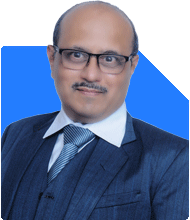In 7 years, I have Rs 25 lakh invested in SIPs, tax-saving mutual funds, and traditional LIC plans. I am 32 earning 2.8 lakh per month. Should I now focus on buying a second home or keep growing my portfolio?
Ans: You’ve achieved a strong financial base at just 32. Rs 25 lakh in mutual funds and LIC shows discipline. A monthly income of Rs 2.8 lakh gives you great financial potential. You’re now considering a second home. This is a crucial point in your financial journey. Let's assess what will help you grow faster and safer.
» Reviewing Your Current Financial Strength
– Rs 25 lakh in 7 years is a very good achievement.
– Your SIPs and tax-saving mutual funds add growth and tax efficiency.
– LIC shows you’ve been cautious and conservative too.
– At 32, time is your biggest asset.
– You have long-term earning potential and compounding time.
– You’re now asking the right question: growth or property?
– Let’s compare based on growth, safety, and flexibility.
» LIC Plans – Safe but Low Yielding
– Traditional LIC plans are more insurance than investment.
– Returns are low, often not beating inflation.
– These policies give safety but not wealth growth.
– Please check if you hold endowment or money-back LIC policies.
– If yes, surrendering them can be a smart decision.
– Reinvest the surrender value in equity mutual funds.
– Use regular plans with guidance from MFDs + CFP.
– This adds growth and also brings better portfolio health.
» Second Home – Attractive, But Does It Add Financial Value?
– Second home gives emotional satisfaction, not investment performance.
– It brings a big loan, long commitment, and low liquidity.
– Rental yield is low, often 2% to 3% only.
– Property resale is not easy or quick when you need funds.
– Capital gains are slow, and taxation is heavy.
– Maintenance, taxes, and interest cost reduce actual returns.
– It doesn’t beat inflation in real terms over the long run.
– You also lose flexibility once locked into a home loan.
– It also delays financial freedom and core wealth-building.
» Real Growth Comes from Equity Mutual Funds
– Equity mutual funds offer high potential growth over the long term.
– They beat inflation, give flexibility, and allow regular additions.
– You can start or stop SIPs anytime, unlike home loan EMIs.
– You can align them with your goals – retirement, kids, travel, etc.
– With expert fund managers, actively managed funds can beat the market.
– Unlike index funds, they don’t just copy – they try to outperform.
– Index funds can’t adjust to market shifts. They stay passive.
– Active funds with CFP guidance adjust based on economic shifts.
– This gives better safety and smarter returns in the long term.
» Liquidity and Flexibility Matter More Than Property Ownership
– Second home limits liquidity for 10–20 years.
– Financial flexibility is important at your age.
– Mutual funds offer redemption and exit anytime (with tax rules).
– You can book profits, rebalance, or switch funds with expert help.
– Property gives none of this flexibility.
– Selling is slow, expensive, and uncertain.
– Growth-focused portfolios win over locked-in assets.
» Tax Efficiency is Better With Mutual Funds
– Tax on equity mutual funds is more efficient than real estate gains.
– LTCG over Rs 1.25 lakh is taxed at 12.5%.
– STCG is taxed at 20% for equity mutual funds.
– In real estate, capital gains are taxed higher and indexed.
– You also pay stamp duty, registration, and brokerage.
– Property tax and maintenance add ongoing cost.
– Mutual funds give tax-efficient compounding with clear reporting.
– Reinvested gains work better than real estate holdings.
» Regular Mutual Funds vs Direct Funds
– Direct mutual funds give lower expense, but no expert advice.
– No rebalancing, no emotional support, no strategy changes.
– With regular funds through CFP-guided MFD, you get personalised help.
– MFD tracks market, fund changes, and rebalances your portfolio.
– You get reviews, planning, and emotional guidance in volatility.
– DIY with direct funds often leads to poor timing and losses.
– Choose regular mutual funds with CFP-backed MFD for better returns.
» Financial Goals Come Before Physical Assets
– What are your major goals ahead? Retirement? Kids’ education? Business idea?
– All these need a strong financial portfolio, not a second house.
– Your wealth must be mobile, flexible, and goal-driven.
– Second home does not serve most goals.
– Mutual funds can be aligned for each goal with timelines.
– Property can’t be liquidated for quick goal fulfilment.
» Current Income and Potential for SIP Growth
– With Rs 2.8 lakh monthly income, you have huge growth capacity.
– Are you investing Rs 80k to Rs 1 lakh monthly in SIPs?
– If not, it’s time to increase SIPs steadily.
– Focus on long-term diversified equity funds with expert help.
– Keep adding based on salary hikes and bonuses.
– Avoid over-allocation to debt or fixed-income products now.
– They bring down overall portfolio growth potential.
» Emergency Fund and Liquidity Must Be Priority
– Keep at least 6 months of expenses in liquid form.
– Use liquid funds or short-term debt funds.
– This gives peace during medical, job, or family emergencies.
– Don’t tie up this buffer in illiquid assets like property.
– Prioritise safety before luxury.
» Insurance and Risk Planning
– Buy pure term insurance equal to 10–15 times annual income.
– Avoid new LIC policies or ULIPs for investment.
– Get family floater health insurance with good coverage.
– Add accidental and critical illness cover if not already present.
– Risk cover protects your future SIPs and lifestyle.
» Wealth Building Should Be Progressive
– Second property feels like a milestone. But it’s not always smart.
– You’ve already taken the right path with SIPs and MFs.
– Compounding needs time and consistency.
– Every extra year in MFs grows wealth faster than expected.
– Don’t break this growth journey by taking on heavy loans.
– Use next 8–10 years to maximise portfolio size.
– Buy assets that grow and move with your life.
» What to Do With Existing Rs 25 Lakh?
– Review your portfolio mix – equity vs debt.
– Ensure at least 70% is in equity mutual funds.
– Reallocate LIC maturity or surrender amount into mutual funds.
– Don't renew traditional plans unless they serve clear insurance needs.
– Add SIPs for long-term goals with clear timelines.
– Reinvest tax-saving mutual fund maturity into better equity funds.
– Keep portfolio reviewed with support of CFP-backed MFD.
» Retirement Planning Starts Now
– Even though you’re 32, start your retirement fund today.
– SIP into long-term mutual funds for retirement corpus.
– Don’t delay this goal for real estate investments.
– You’ll thank yourself later for starting early.
– Compounding works best when started young.
» Avoid Real Estate as Investment Asset
– Real estate is not wealth growth, it’s wealth parking.
– It doesn’t generate strong returns or liquidity.
– It adds debt, reduces mobility, and gives low real income.
– It’s not useful for goal-based financial planning.
– Keep real estate for personal use, not portfolio growth.
– Choose financial assets that move and adapt with your life.
» Finally
– You are in a great financial position already.
– Keep building on this momentum with discipline.
– Real estate may slow you down and trap liquidity.
– Mutual funds offer growth, safety, tax-efficiency, and flexibility.
– With a Certified Financial Planner, your decisions become sharper.
– Avoid mixing emotions with money decisions.
– Choose assets that support your goals, not complicate them.
– Stay consistent with SIPs, raise your investments each year.
– Wealth grows quietly and quickly with time and the right strategy.
Best Regards,
K. Ramalingam, MBA, CFP,
Chief Financial Planner,
www.holisticinvestment.in
https://www.youtube.com/@HolisticInvestment























